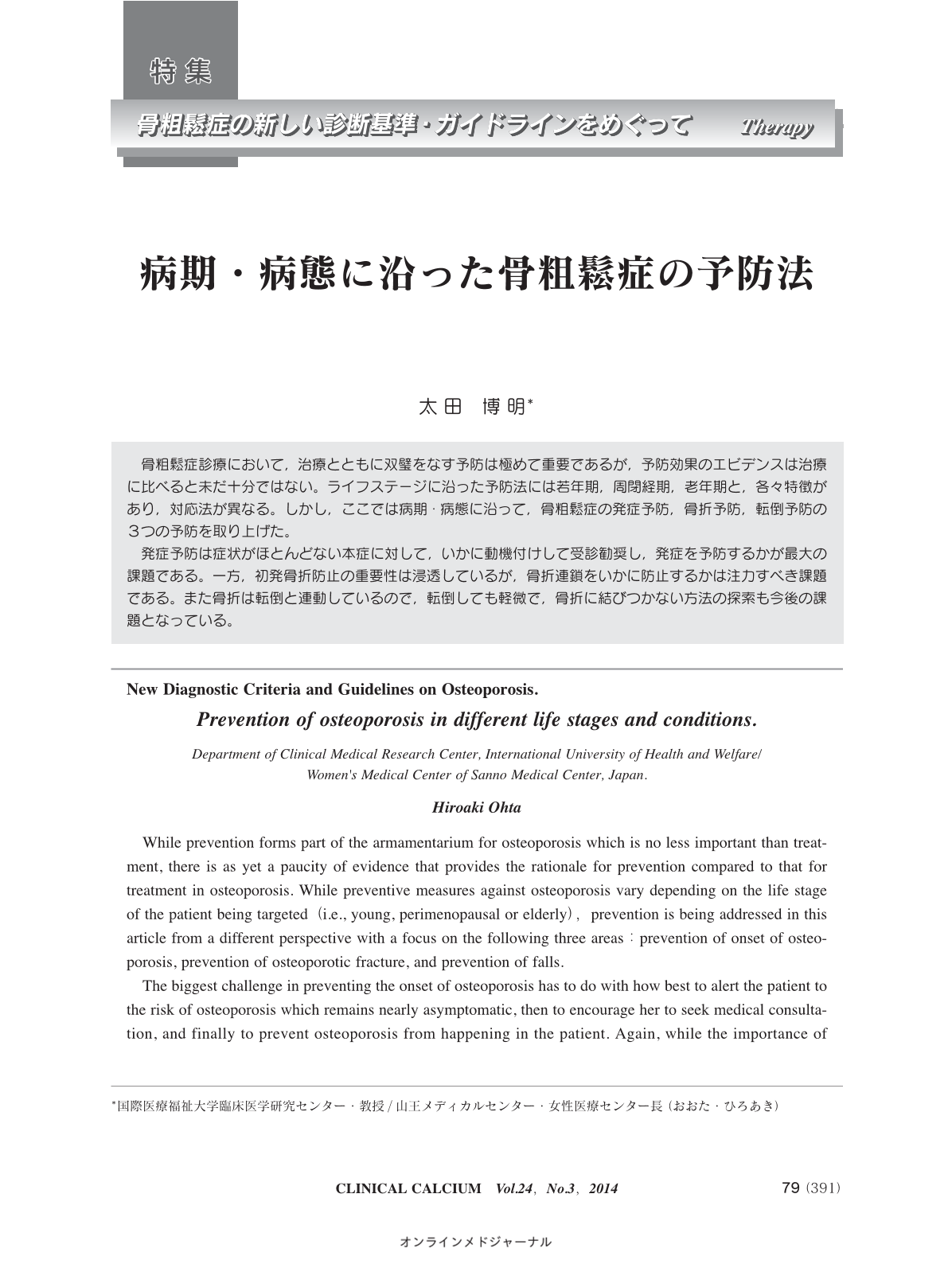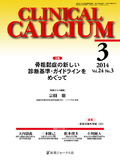Japanese
English
- 有料閲覧
- Abstract 文献概要
- 1ページ目 Look Inside
- 参考文献 Reference
骨粗鬆症診療において,治療とともに双璧をなす予防は極めて重要であるが,予防効果のエビデンスは治療に比べると未だ十分ではない。ライフステージに沿った予防法には若年期,周閉経期,老年期と,各々特徴があり,対応法が異なる。しかし,ここでは病期・病態に沿って,骨粗鬆症の発症予防,骨折予防,転倒予防の3つの予防を取り上げた。 発症予防は症状がほとんどない本症に対して,いかに動機付けして受診勧奨し,発症を予防するかが最大の課題である。一方,初発骨折防止の重要性は浸透しているが,骨折連鎖をいかに防止するかは注力すべき課題である。また骨折は転倒と連動しているので,転倒しても軽微で,骨折に結びつかない方法の探索も今後の課題となっている。
While prevention forms part of the armamentarium for osteoporosis which is no less important than treatment, there is as yet a paucity of evidence that provides the rationale for prevention compared to that for treatment in osteoporosis. While preventive measures against osteoporosis vary depending on the life stage of the patient being targeted(i.e., young, perimenopausal or elderly),prevention is being addressed in this article from a different perspective with a focus on the following three areas:prevention of onset of osteoporosis, prevention of osteoporotic fracture, and prevention of falls. The biggest challenge in preventing the onset of osteoporosis has to do with how best to alert the patient to the risk of osteoporosis which remains nearly asymptomatic, then to encourage her to seek medical consultation, and finally to prevent osteoporosis from happening in the patient. Again, while the importance of preventing primary osteoporotic fracture is beginning to be widely recognized, how to keep a chain reaction of fracture events from happening in osteoporotic patients remains a major challenge to be addressed. Lastly, as fracture events go hand in hand with falls, how to minimize the impact of falls in such a way that they do not lead to fractures remains yet another challenge calling for attention.



